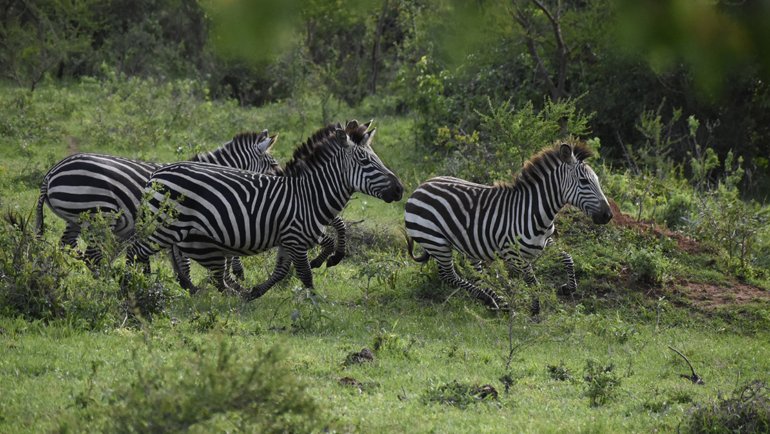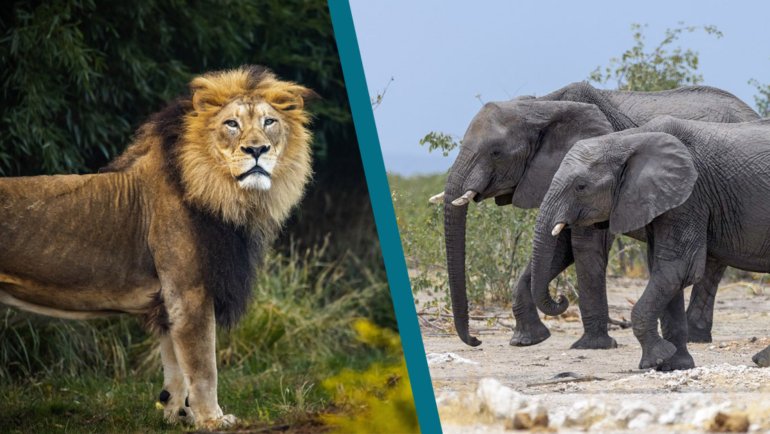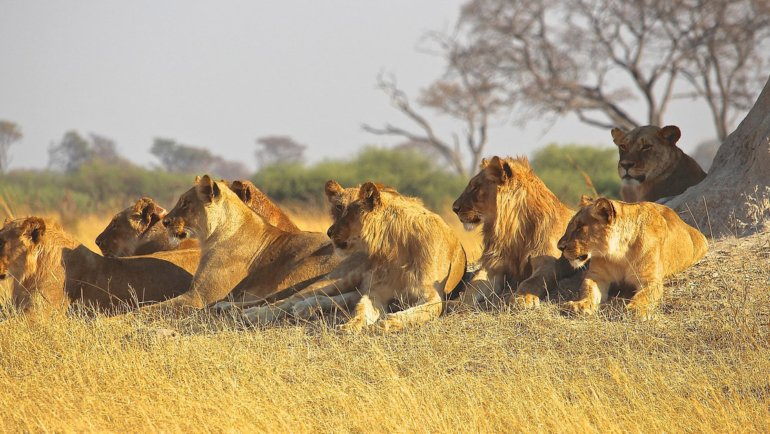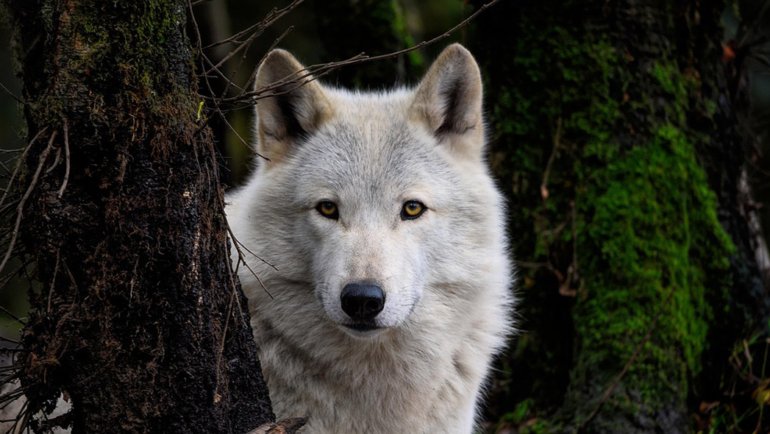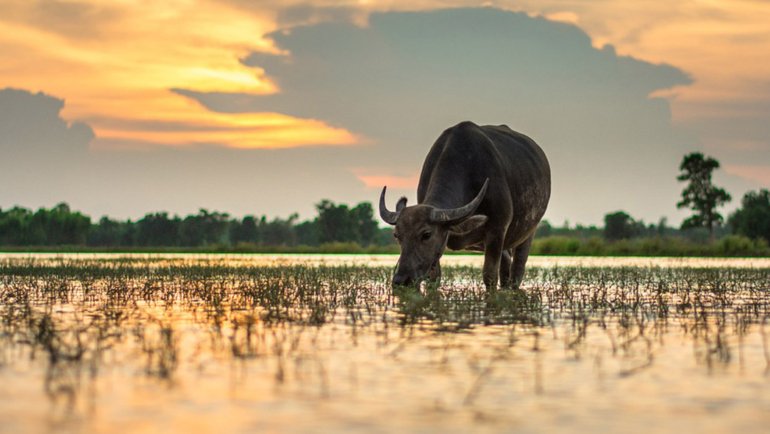Elephants are among the few intelligent wild animals, which means that any action or habit these species perform has a significant meaning or is essential in accomplishing a specific goal.
Therefore, to understand why elephants hold tails, I urge you to read this article to the end; since I will provide comprehensive information to address this query.
Why Do Elephants Hold Tails?
Despite these mammals being the largest land animals in the world, they generally have short tails that typically measure 1-2 meters long. However, its length doesn’t hinder them from using it to perform valuable functions.
By holding the tail of another elephant, the giant mammal is able to accomplish these objectives:
Guiding and Protecting Their Young Ones
Although all mammals are protective when it comes to their offspring, female elephants are known to be highly emotionally connected to their calves.
Since their social unit is matriarchal, mothers are known to stay close to their calves until they attain a maturity age of 10-12 years.
Before they reach an age where they are considered adults, young elephants always follow their mothers and typically hold on to their tails whenever they sense danger or when traveling.
Therefore, a female will use her tail to ensure that her calf is close to her; by letting the young one hold on to her tail when traveling or during risky occasions. If she doesn’t feel her calf clutching to her tail, she’ll know that all is not well; hence ensuring that she finds the offspring.
It’s nature’s way of ensuring that a female elephant always guides and protects her calf the same way humans hold their children’s hands whenever they are walking.
Also read: Are Elephants Dangerous? Do They Attack Humans?
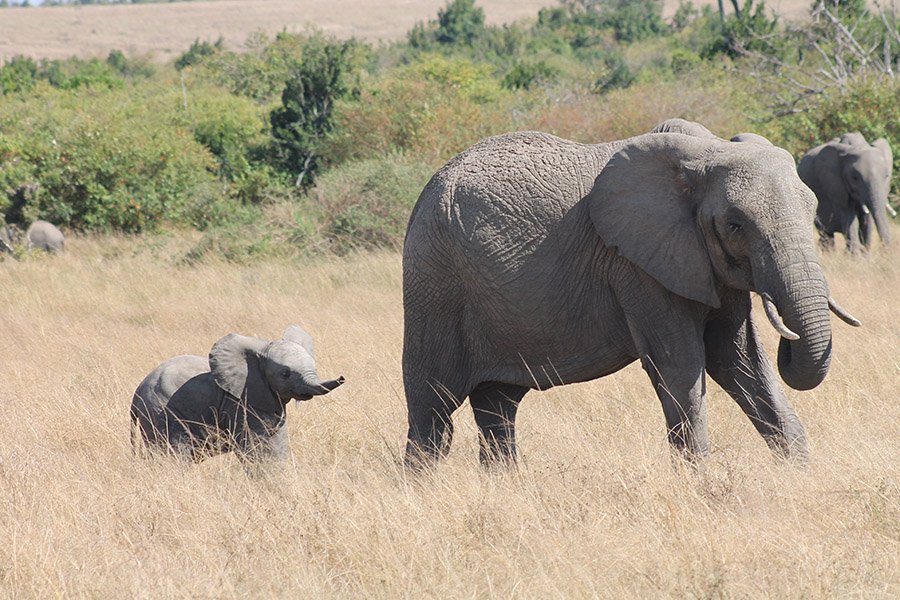
When Passing Risky Places
Tail holding among elephants is not only restricted to a mother and her calf since adults also hold each other tails. But it’s usually common when they are passing places that seem to be dangerous.
Such instances include crossing rivers, where the depth is unknown, or in areas with a high vegetation cover requiring them to walk in a single line.
Although elephants like to enjoy themselves in water and mud by rolling in it, they are very cautious if they pass an unfamiliar water source.
The clan’s leader, the matriarch, always leads them, and the other members follow her in a single line by holding the tail of the respective elephant in front.
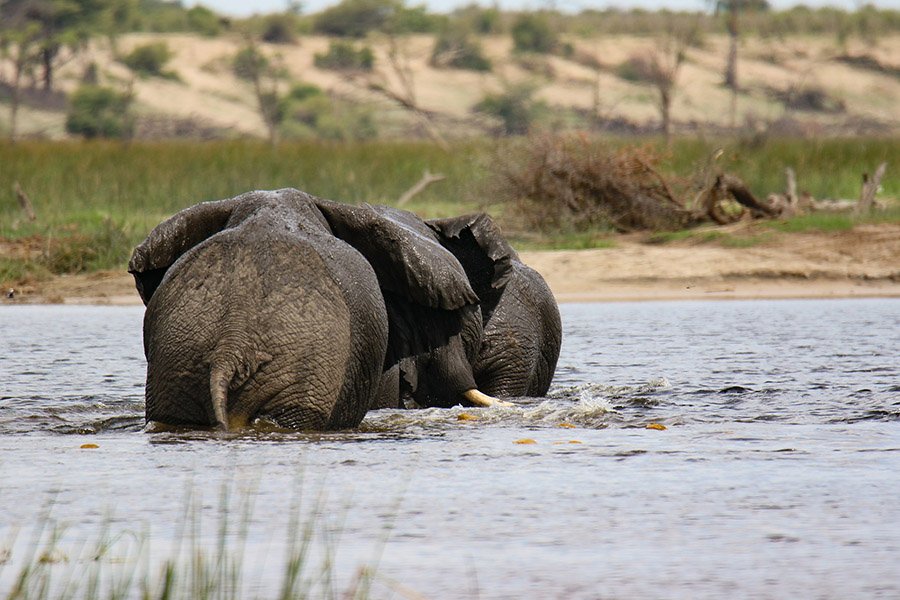
A Form of Communication During The Mating Season
During the mating season, a male elephant will identify its preferred mate. After conquering or chasing away its competition, it will hold on to the female’s tail to inform her that he is the best candidate to consider.
The law of the jungle, which is survival of the fittest/the strongest animal has the first priority, is also applicable to elephants. Females tend to shun away males until the strongest male overpowers other competitors to be allowed to mate with them.
The male elephant that manages to do so holds the tail of the fertile (estrus) female and proceeds to mate with her for several days. When other males see him holding the tail, they all understand the meaning.
When Playing
Young elephants are similar to other mammals’ offspring in regards to their playful nature. Elephant calves tend to hold on to their fellow playmate’s tails when playing to restrict their movements and stop them.
Mothers are also occasionally seen holding their calves’ tails when playing to train them on the need to be alert or test their strength.
Also read: Are Elephants Friendly? Do They Show Affection to Humans?
To Coordinate Their movement When in Captivity
One of the most effective ways trainers or entertainers use domesticated elephants in captivity to coordinate their movements is by ensuring that these giant mammals hold the tails of each other.

What Are Other Uses for An Elephant’s Tail?
Apart from the act of holding their fellow clan member’s tails, elephants also use their tails to accomplish these functions:
To Protect It from Insects and Bugs
One common use by all animals with tails is to protect them from annoying creatures like insects and bugs that bite, attach or rest on their bodies.
Although it has a small tail compared to most animals, the elephant still uses its tail as a broom or a flyswatter to ward off/sweep away these creatures from its body.
To Communicate
It’s essential to note that elephants also use their tails to communicate and convey messages to other clan members. For instance, wagging and swinging their tails indicate that the specific elephant is happy/excited.
Raising the tail high may indicate danger or act as a warning sign, while inserting it between its legs typically illustrates fear.
To Defend Itself from Predator Attacks
Although most predators rarely hunt the giant mammal due to its intimidating size, there are instances when some brave wild animals attack elephants.
It usually occurs when lions or hyenas, in large numbers, spot a lone elephant that is vulnerable. Due to their long and sharp tusks, most predators prefer to approach the mammal from behind since it poses less danger than the mammal’s front part.
The elephant will try to kick the animal to defend itself from rear attacks. If it proves futile, especially if the predator has already climbed on its back, it will use its tail to hit the enemy as hard as possible.
The fur extensions at the end of the elephant’s tail have the ability to irritate and hurt when they are forcefully flicked and directed toward the enemy.
Final Thoughts
Although the IQ level of an elephant is a bit far compared to us, we cannot dismiss the fact that these giant mammals are among the most intelligent wild animals on earth.
Therefore, the best way to summarize the concept of tail-holding among elephants is by comparing it to the act of holding hands among humans. This comparison is because both action shares plenty of similar purposes.

